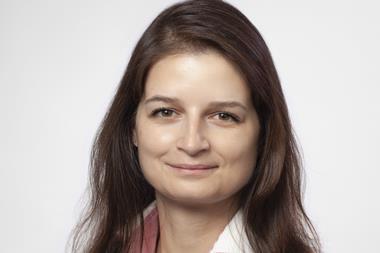Ben Cattaneo, founder of The Decision-Making Studio, shares why risk management cannot move forwards until it understands and addresses organisational decision-making
Over the years I have spent in corporate risk management roles, I have interviewed many candidates for various positions.
I started to notice that increasingly, most candidates struggled to answer a particular question. This became quite acute last year (my last in risk) when trying to fill a vacancy in my team.

That question was: “Can you tell me about a time when you helped - or tried to help - the organisation make an important decision?”
It wasn’t a trick question.
I was after an example like a major investment, a market entry (or exit), a product launch, a re-org, operational decisions, or something similar.
I also wasn’t after a successful attempt at improving decision quality either. A ‘glorious failure’ would have been perfectly acceptable – we learn more from our failures than our successes after all, or we become aware of the constraints of our environment.
“I don’t recall another time when we put through so few candidates to a shortlist.”
Response after response led me back to David Foster Wallace. In a now oft-cited commencement speech, Wallace opens with the following parable:
“There are these two young fish swimming along and they happen to meet an older fish swimming the other way, who nods at them and says ‘Morning, boys. How’s the water?’ And the two young fish swim on for a bit, and then eventually one of them looks over at the other and goes ‘What the hell is water?’”
These were all fairly senior candidates, with experience in large consultancies, prominent companies, and with certifications in the discipline from one or more of the most well-recognised industry associations.
And yet, I kept getting back the same types of responses:
- “There was a time when I helped a senior colleague make a decision about what to do about a risk…..”
- “I was involved in helping us decide which risk software to procure….”
Many didn’t understand the question (or perhaps didn’t want to), as much as I tried to rephrase it, often more than once. Instead of “What the hell is water?”, it was “What the hell is an organisational decision?”
We ended up with a great hire, but it should not have been that hard. I don’t recall another time when we put through so few candidates to a shortlist.
I don’t blame the candidates I interviewed. I was witnessing a symptom of a deeper cause. Risk management, as commonly practiced, is often divorced from organisational decision-making.
However, it was the lack of awareness of this fact that I found (and continue to find) disturbing. After all, we cannot address a problem unless we call it out first.
“Defining “risk” as also “opportunity,” will be meaningless if such profession-wide breakthroughs don’t improve organisational decision-making.”
I see many conversations in the risk profession as proposed improvements that don’t hit the mark. Resolving the rather tiresome “quantitative versus qualitative” “debate,” or defining “risk” as also “opportunity,” will be meaningless if such profession-wide breakthroughs don’t improve organisational decision-making.
These conversations still fail, as Wallace put it, to notice, “the most obvious, important realities.” There is much work to do.
As a start, it’s helpful to understand what decision quality is so that risk professionals can spot how the decision-making environment around them (including norms, behaviour, culture) is working.
Decision-making is something very seldom taught at universities or business schools. It’s something we all think we know how to do well, but the reality is often quite different.
There is however a lot of great research and material on decision quality. I have organised these into a simple framework called “FOCUS” to help individuals think through what a quality decision looks like.
There are many other excellent frameworks which cover the same or similar ground, but FOCUS is easy to remember. Each of the FOCUS elements has relevance for risk professionals:
-
Framing
A quality decision is framed well, meaning it aligns with one’s values, has clear objectives and the right amount of time and energy dedicated to it.
Contrary to common myths, most decisions an organisation makes ought to be made quickly. Some decisions are one-off, and many are recurring.
Any risk professional should be able to help their organisation frame decisions well – and spot when this is not the case.
-
Options
A quality decision has the right number of options – not too many, not too few. Most organisations make large investment decisions using an option set that is far too narrow (called the ‘either/or fallacy’).
No amount of risk modelling of a single option will matter if better alternatives to achieve the same or better outcomes are not also being considered.
-
Cognitive diversity (and other human factors)
Quality decisions incorporate forms of psychological safety and techniques to account for and address cognitive biases that can lead to errors in judgement. They also account for physical and emotional states, such as being tired or hungry.
Techniques like “think-write-share”, the “premortem” or “weighted anonymous feedback” can help harness the power of cognitive diversity. The benefits of debiasing have been studied and are clear, as shown in a study of 1,300 executives worldwide.
-
Uncertainty
No outcome is certain, and a quality decision incorporates probabilistic thinking.
Of course, this is something risk professionals know all about. However, it is important to bear in mind that a common bias in decision-making is ‘outcome bias,’ in which decision-makers judge the quality of a decision based on its outcome, even if that outcome was a result of luck, good or bad.
Over many decisions and the law of large numbers, quality decisions add up and compound. However, there is an emotional element to probabilistic thinking and there may also be a wider set of preferences going on within an individual and across a leadership team that may not be apparent. Technical approaches to uncertainty are therefore not enough.
-
Selection
Once a way forward is selected, a quality decision moves on to implementation and does not re-open deliberation (unless something completely new comes to light that the decision-maker could not have known earlier).
This is merely a starting point. In addition, understanding is never enough. Quality decision-making is a practice, not a process or set of tools.
Nonetheless, as a risk professional, you can use the FOCUS framework to identify opportunities to improve decision quality in your organisation.
Start asking, for example:
- “Do we frame decisions well?”
- “Do we consider the right number of options, or do we leave value on the table?”
- “Do we truly harness the power of cognitive diversity?”
- “Do we think probabilistically?”
- “Once we choose a path, do we re-open it unnecessarily?”
- “Do we communicate decisions well?
By understanding decision quality, noticing how it is practiced (or otherwise) and finding ways to improve it, the risk management profession can start to transform itself. Over time, risk management can be viewed as an essential component to the achievement of successful outcomes.
Ben Cattaneo is the founder of The Decision-Making Studio, a consultancy that helps leaders and organisations practice and embed quality decision-making under uncertainty. He hosts The All Things Risk podcast, a show dedicated to helping us understand our world and ourselves through the lenses of risk and uncertainty. He is the co-author of the book, Decision-Making in the Polycrisis Era.














No comments yet